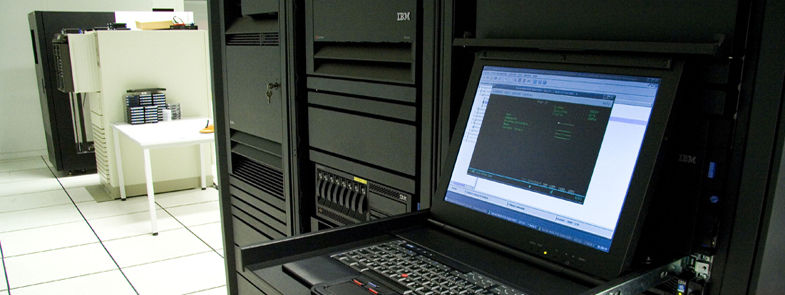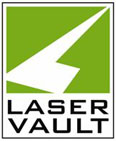The virtual tape appliance offers fast, easy, alternative to LTO tape for IBM i, AIX, Windows and Linux.
LTO tape backup and recovery times get slashed with LaserVault’s all flash Universal Backup Device (UBD). For most tape users, the savings will be a considerable bonus to their operations with upgraded performance and an easier, faster process, accelerated by the all-flash appliance.
UBD with all-flash takes bogged down tape backup operations and supercharges them. Compared with using tape, expedited data recovery becomes a simple task completed in a fraction of the time restoring from tape requires. Granular recovery combined with the use of SSDs provides the ability to recover files in seconds.
UBD is a virtual tape appliance that cuts the amount of time and effort needed to manage the backup and recovery process. Easy implementation enables most to move from using physical tape to using virtual tape in a single day. UBD connects via SAS or Fibre Channel, and supports whatever speed the host server can push the data (400 MB/sec or faster).
“There is a continual drain and strain placed on IT resources today that are caused by the time-intensive and manual processes inherent with using tape for backup and recovery,” states Brad Jensen, CEO of Electronic Storage Corporation, makers of LaserVault UBD. “This negative impact is eliminated with all flash UBD.”
“Using UBD is like having your tape backups but on steroids. The key is that it’s exactly like using LTO tape, but without the physical aspects,” says Jensen. “UBD uses familiar backup and restore commands, SAVSYS, SAVLIB, RSTLIB, etc., and as such, the operator can easily switch from using tape to using UBD. With UBD, tapes no longer have to be moved to and from offsite storage, a tape or tape library no longer needs to be loaded for the nightly backup, tape inventories no longer have to be taken, travelling onsite to perform restores is no longer needed, and there is no longer a need to retrieve tapes from offsite storage to do a restore.”
“That’s a lot of physical processes that no longer have to be done resulting in a huge amount of time saved, plus the risks of human error are eliminated. With UBD, restores can be lightning fast, hyper velocity compared with tape.
In a case where a company wants or needs to continue to use tape for long term storage, they can do so with UBD’s Direct TapeOut option. This setup provides the benefits of a tiered storage system, with the speed and ease of use of UBD and all flash for active backups, while keeping physical tape to provide offline long term data protection.
Because companies have different backup and recovery requirements, varying levels of expertise and a variety of existing systems, UBD can be configured for a company’s unique data protection needs. This makes it well-suited for small and medium-sized businesses (SMBs) with limited budgets, or larger companies that want a cost-effective solution that when deployed has an instant positive impact on their processes and costs. For large enterprises, UBD is available as hybrid flash storage, combining the use of SSDs and HDs for maximum speed and capacity.
UBD comes with Replacador replication software that uses Windows 2012 built-in deduplication. It also integrates with all deduplication appliances, such as ExaGrid, Quantum, Mimix, etc, and acts as a gateway between the host server and the dedupe solution.
“Deduplication with all flash is in hyper velocity when you compare it with HDs” Jensen says. “And the results our customers are seeing with data deduplication are outstanding. Customers are getting 10:1 compression! And unlike hard-drive based deduplication systems, restores of their backups happens quickly.”
Developed for use with IBM Power Systems, UBD is now also available for AIX, Windows and Linux.
All-flash UBD is available now. For more details and to see a technical demo, email













 Business users want new applications now. Market and regulatory pressures require faster application updates and delivery into production. Your IBM i developers may be approaching retirement, and you see no sure way to fill their positions with experienced developers. In addition, you may be caught between maintaining your existing applications and the uncertainty of moving to something new.
Business users want new applications now. Market and regulatory pressures require faster application updates and delivery into production. Your IBM i developers may be approaching retirement, and you see no sure way to fill their positions with experienced developers. In addition, you may be caught between maintaining your existing applications and the uncertainty of moving to something new. IT managers hoping to find new IBM i talent are discovering that the pool of experienced RPG programmers and operators or administrators with intimate knowledge of the operating system and the applications that run on it is small. This begs the question: How will you manage the platform that supports such a big part of your business? This guide offers strategies and software suggestions to help you plan IT staffing and resources and smooth the transition after your AS/400 talent retires. Read on to learn:
IT managers hoping to find new IBM i talent are discovering that the pool of experienced RPG programmers and operators or administrators with intimate knowledge of the operating system and the applications that run on it is small. This begs the question: How will you manage the platform that supports such a big part of your business? This guide offers strategies and software suggestions to help you plan IT staffing and resources and smooth the transition after your AS/400 talent retires. Read on to learn:
LATEST COMMENTS
MC Press Online